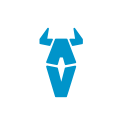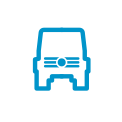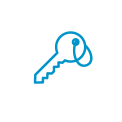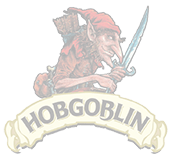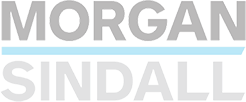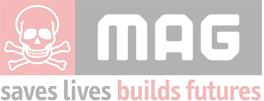In production for over 75 years Unimogs range from 30HP to over 300HP and can be fitted with a huge range of factory-installed and aftermarket equipment, catering to a wide variety of applications.
Choosing the Right Unimog Selecting the ideal Unimog depends on your intended use, budget, and expectations for a pre-owned vehicle.
Given the wide range of models and applications, providing universal buying advice isn’t feasible.
Instead, we encourage you to contact us directly to discuss your needs.
Our expertise will guide you to the most suitable options while helping you avoid common pitfalls encountered by first-time buyers.
In the meantime, here are some key points to consider when purchasing a Unimog:
General Tips
- Invest in the best: Aim to buy the best-condition Unimog your budget allows.
- A good home: A good previous owner who has properly maintained the Unimog is more important than its age, kilometres, or hours.
- Define Your Must-Haves: Determine which features and equipment are essential versus desirable. Adding equipment later can be costly, so select a model that ticks as many boxes as possible.
- Plan for Upgrades: Some features, like front 3-point linkages, can be added later as DIY projects, spreading the cost over time.
- Be Wary of Bargains: “eBay deals” may seem attractive, but they often require significant repairs or renovations. If purchasing outside Atkinson Vos, budget accordingly for any necessary work.
- Cheap for a Reason: If a deal seems too good to be true, it probably is.
Inspecting a Unimog
When evaluating a potential purchase, use the following checklist:
- Engine: Ensure the engine is cold before starting. It should start reliably, even in low temperatures. Some smoke is normal when cold but should dissipate after 15 minutes of driving.
- Gearbox: Manual gearboxes may feel notchy when cold (especially going into 5th gear), but they shouldn’t crunch. This should smooth out after warming up. Tiptronic gearboxes are generally reliable but check that all gears engage smoothly, and be alert for any issues.
- Brakes: The brakes should provide effective stopping power and the Unimog should stop in a straight line. Be mindful that repairing or replacing calipers can be costly.
- Hydraulics: Thoroughly test all hydraulic functions, such as the tipper ram, and inspect for leaks. While minor leaks are common, they should still be monitored.
- Cab: Look for signs of rust and damage. Rust repairs can be both time-intensive and expensive.
- Electrics: Test all electrical systems and components. Older models may have minor electrical gremlins, but ensure the main functions work properly. For UGN models, check for both current and stored fault codes.
- Wheels: Inspect tyres for uneven wear, which could indicate steering or suspension issues, and check the 4 digit DOT code which shows the age of the tyre. Also, ensure wheel rims are damage-free and wheel nuts are securely fitted.
- Steering: Some play in the steering is normal on older models, but excessive play at the wheels is not. The steering wheel should turn easily and self-centre without difficulty.
Pre-purchase inspections
- We offer a comprehensive pre-purchase inspection service. With an in-depth report giving you a clear understanding of the vehicle’s condition you’ll know exactly what you’re getting. More information can be found here.
Here at Atkinson Vos we deal principally with four Unimog model ranges:
U900/1100 (406,416,417,419) 1963-1992
SBU U1000-U2450 (424, 425, 427, 437) 1976-2004.
UHN U3000-5000 (437) 2001-2018
UGN U300-500 (405) 2001-2015
U900/1100
Agricultural versions with PTOs and three point linkages command a price premium.
Double cab versions are rare and are much more desirable and expensive than single cab versions.
Pros
Lots of character
- Highly manoeuvrable vehicle.
- Practical enough to use regularly
- 45mph cruising speed with standard axle ratio.
- Lots of upgrade options available.
- Excellent parts availability.
- Values are increasing.
Cons
- Gearbox is less robust than later models and can be expensive to repair.
- Cabs suffer from rust and are more complicated to repair than later models.
- Limited supply of vehicles in good condition.
- Restoration of a vehicle in poor condition can be expensive.
- Only 2 seats in single cab.
- Left hand drive only.
SBU models
These are the most common Unimog models. They combine practicality with the iconic Unimog looks.
Agricultural versions with PTOs and three point linkages command a price premium.
Double cab (DOKA) versions are rare and are much more desirable and expensive than single cab versions.
Pros
- Great value for money.
- Good supply of vehicles in a broad range of price and specification.
- Practical enough to use regularly
- 55mph+ cruising speed with standard axle ratio.
- Lots of upgrade options available.
- 100% parts availability including many used & reconditioned parts.
- 3 seats in single cab, 7 seats in double cab (DOKA)
- Right or left hand drive available.
- Minimal depreciation.
Cons
- Less character than older models.
- Restoration or repair of a vehicle in poor condition can be expensive.
- Adding agricultural equipment to a basic vehicle is expensive.
UHN models (U3000-5000)
These vehicles offer great value for money compared to SBU Unimogs.
Pros
- Good supply of vehicles.
- Ideal for camper conversions & general industrial use
- Practical enough to use regularly
- 56mph cruising speed.
- 100% parts availability including used and reconditioned parts.
- Mostly right hand drive available.
- Low depreciation.
- More refined than older models.
- Good supply of vehicles.
- Perfect for heavy towing
- Practical enough to use regularly
- 56mph cruising speed.
- Fibre-composite cab construction so no rust problems on cab.
- 100% parts availability including used and reconditioned parts.
- Right or left hand drive available.
- Low depreciation.
- More suited to front mount equipment.
- CANbus technology for control of implements & equipment.
Cons
- Electronics make them less DIY friendly and less suitable for use in isolated areas where a workshop is not easily accessible.
- Large size makes these models less suitable for some jobs
- Left hand drive conversions are expensive.
- Less character than older models.
- Electronics make them less DIY friendly and less suitable for use in isolated areas where a workshop is not easily accessible.
- Large size makes these models less suitable for some jobs
- Adding additional equipment to a basic Unimog is expensive.
- Little interchangeability of parts and equipment/implements with older models.
UGN models U300-500
These vehicles are becoming more available on the used market and depending on your intended use can offer great value for money. However agricultural versions are very rare & usually very expensive.
Pros
- Good supply of vehicles.
- Perfect for heavy towing
- Practical enough to use regularly
- 56mph cruising speed.
- Fibre-composite cab construction so no rust problems on cab.
- 100% parts availability including used and reconditioned parts.
- Right or left hand drive available.
- Low depreciation.
- More suited to front mount equipment.
- CANbus technology for control of implements & equipment.
Cons
- Less character than older models.
- Electronics make them less DIY friendly and less suitable for use in isolated areas where a workshop is not easily accessible.
- Large size makes these models less suitable for some jobs
- Adding additional equipment to a basic Unimog is expensive.
- Little interchangeability of parts and equipment/implements with older models.


